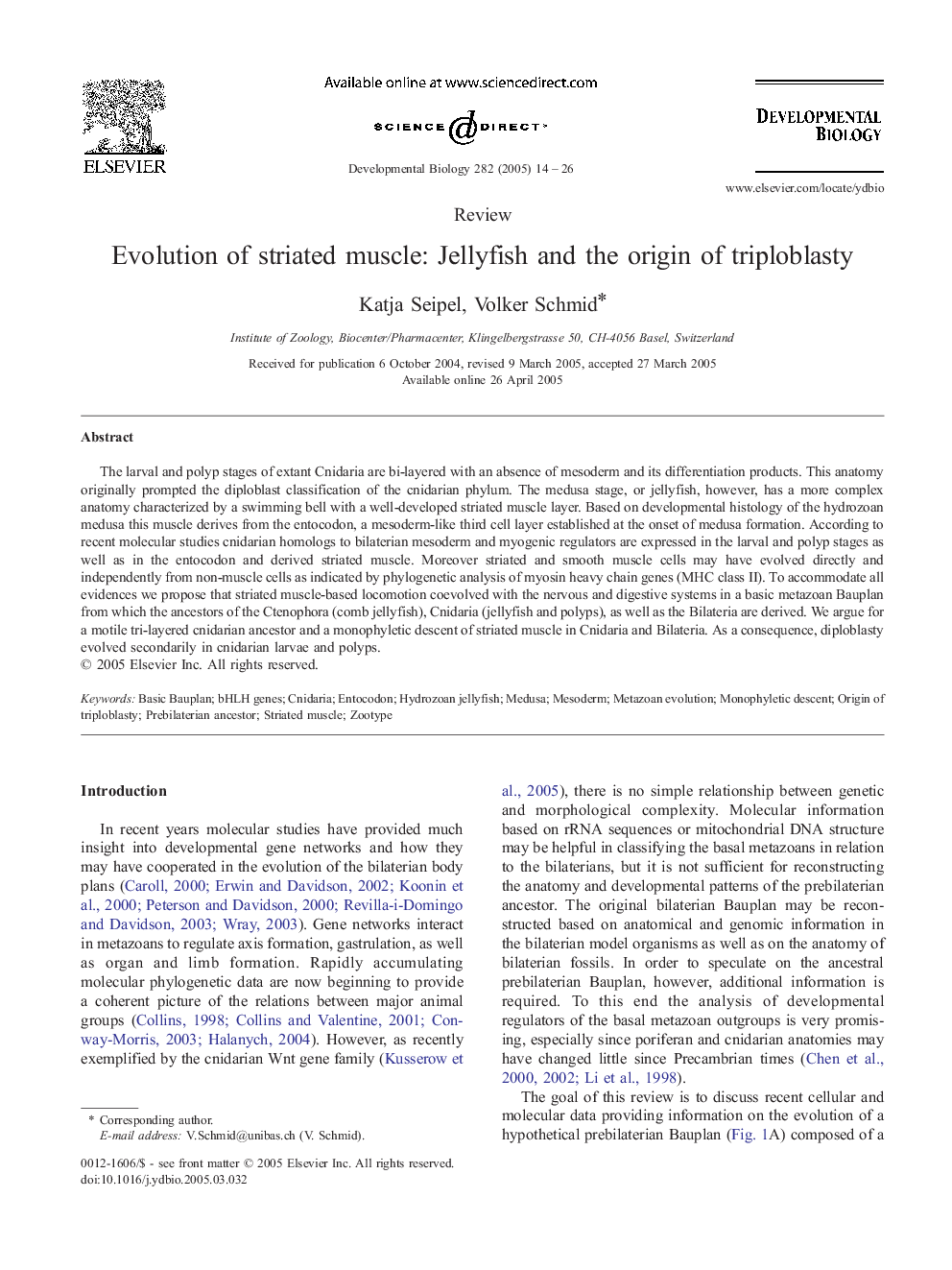| کد مقاله | کد نشریه | سال انتشار | مقاله انگلیسی | نسخه تمام متن |
|---|---|---|---|---|
| 10933874 | 1093870 | 2005 | 13 صفحه PDF | دانلود رایگان |
عنوان انگلیسی مقاله ISI
Evolution of striated muscle: Jellyfish and the origin of triploblasty
دانلود مقاله + سفارش ترجمه
دانلود مقاله ISI انگلیسی
رایگان برای ایرانیان
کلمات کلیدی
موضوعات مرتبط
علوم زیستی و بیوفناوری
بیوشیمی، ژنتیک و زیست شناسی مولکولی
بیولوژی سلول
پیش نمایش صفحه اول مقاله

چکیده انگلیسی
The larval and polyp stages of extant Cnidaria are bi-layered with an absence of mesoderm and its differentiation products. This anatomy originally prompted the diploblast classification of the cnidarian phylum. The medusa stage, or jellyfish, however, has a more complex anatomy characterized by a swimming bell with a well-developed striated muscle layer. Based on developmental histology of the hydrozoan medusa this muscle derives from the entocodon, a mesoderm-like third cell layer established at the onset of medusa formation. According to recent molecular studies cnidarian homologs to bilaterian mesoderm and myogenic regulators are expressed in the larval and polyp stages as well as in the entocodon and derived striated muscle. Moreover striated and smooth muscle cells may have evolved directly and independently from non-muscle cells as indicated by phylogenetic analysis of myosin heavy chain genes (MHC class II). To accommodate all evidences we propose that striated muscle-based locomotion coevolved with the nervous and digestive systems in a basic metazoan Bauplan from which the ancestors of the Ctenophora (comb jellyfish), Cnidaria (jellyfish and polyps), as well as the Bilateria are derived. We argue for a motile tri-layered cnidarian ancestor and a monophyletic descent of striated muscle in Cnidaria and Bilateria. As a consequence, diploblasty evolved secondarily in cnidarian larvae and polyps.
ناشر
Database: Elsevier - ScienceDirect (ساینس دایرکت)
Journal: Developmental Biology - Volume 282, Issue 1, 1 June 2005, Pages 14-26
Journal: Developmental Biology - Volume 282, Issue 1, 1 June 2005, Pages 14-26
نویسندگان
Katja Seipel, Volker Schmid,